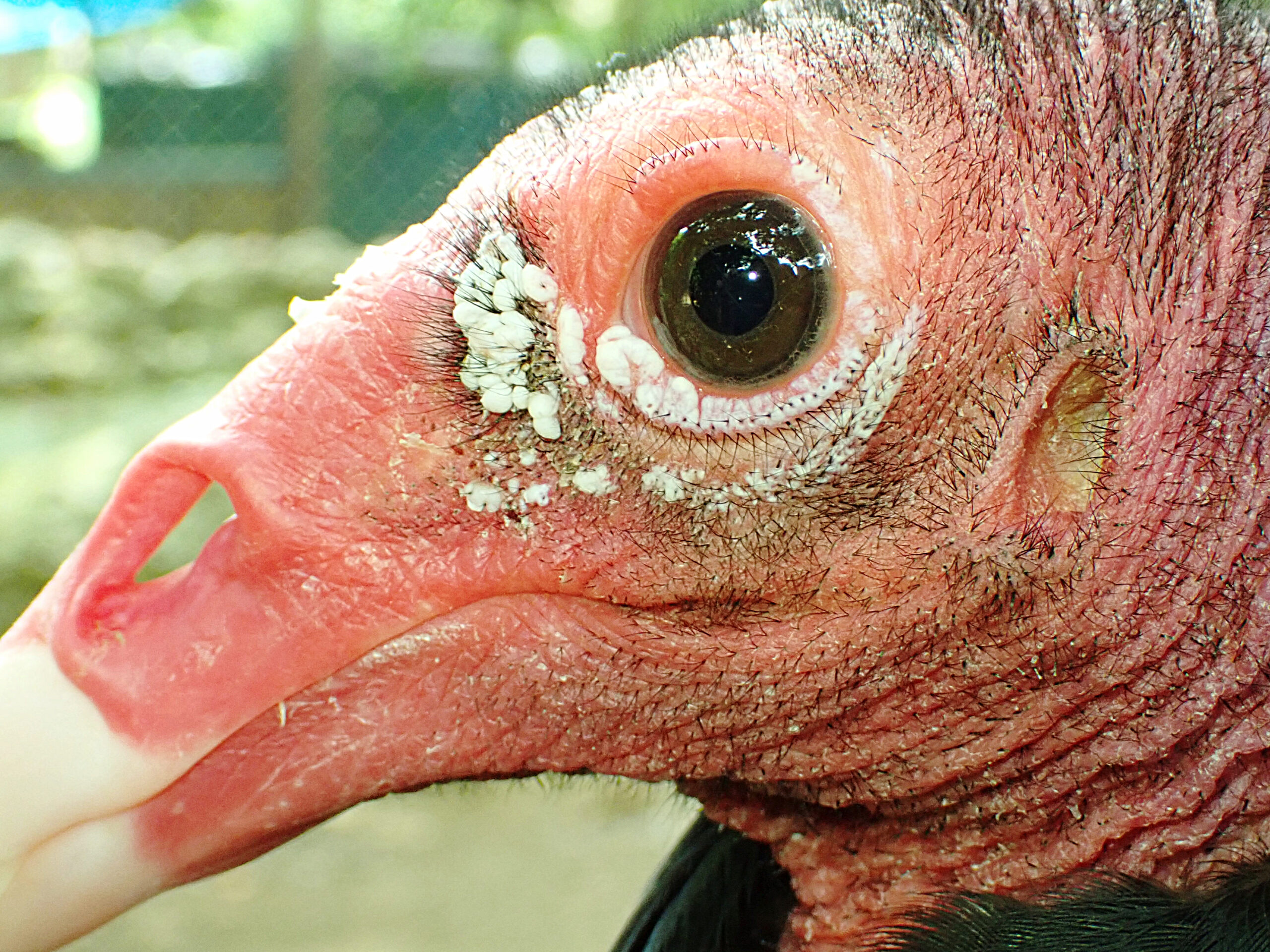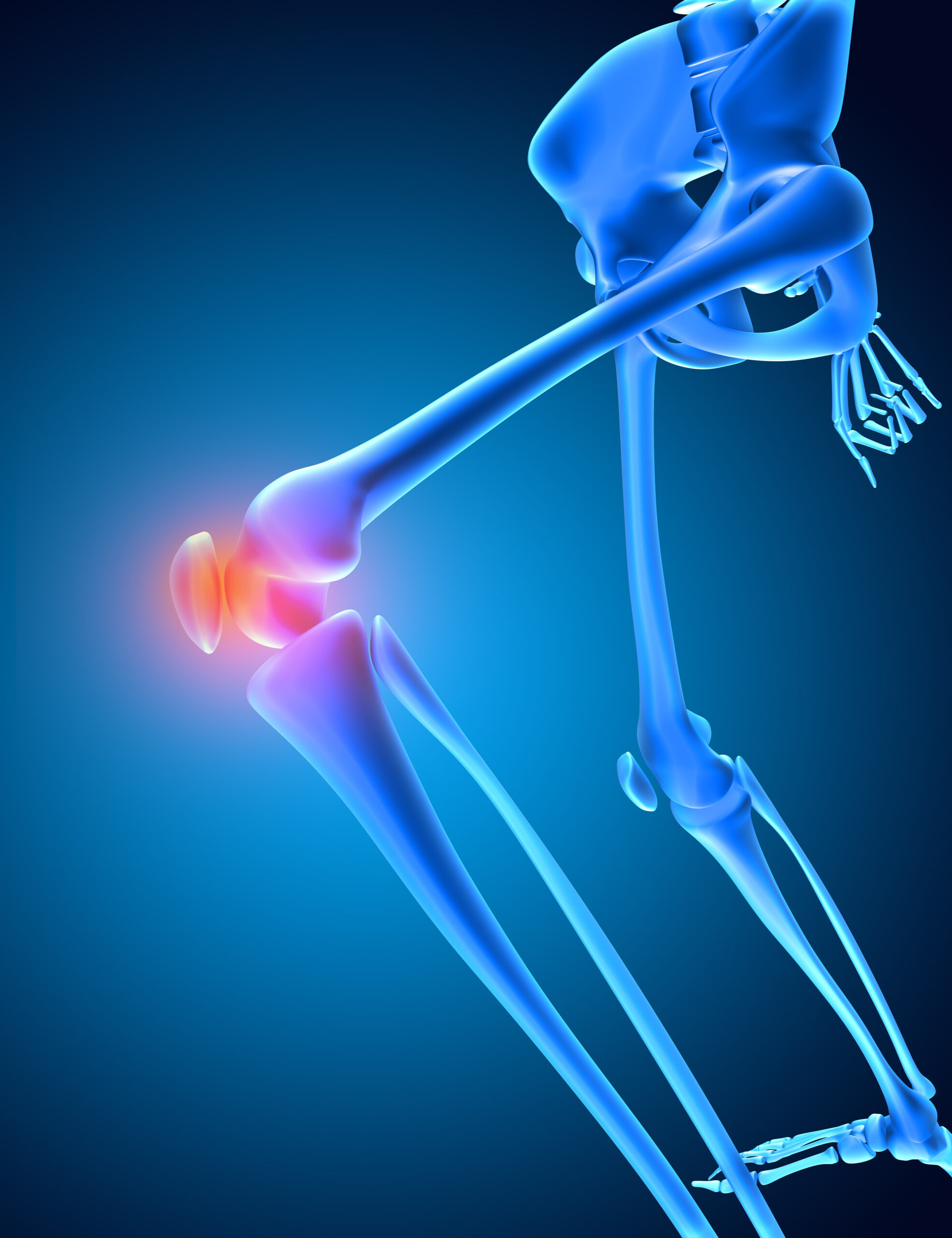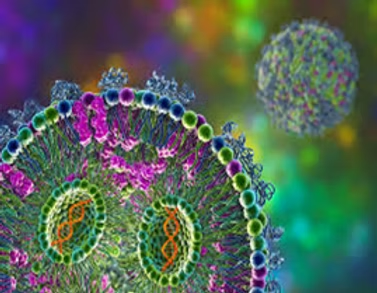Cancer is a complex disease involving a group of disorders characterized by abnormal cell cycle progression. It remains one of the deadliest diseases known to humans, and domestic and wild animals. At national and regional levels nothing really specific has been done regarding the pattern of occurrence of cancer in our country in animals. The relationship of the human-animal bond has been publically acknowledged which has elevated the status of animals to that of human beings with most of us considering pets as our family members. As per the American Veterinary Association (AVMA), almost 50% of the pets above the age of 10 years die of cancer. According to the study conducted by Taxas A and M University College of Veterinary Medicine, dogs have 35 times higher incidence of skin cancer than humans, 4 times mammary tumors, 8 times bone cancer and the rate of leukemia is doubled. The veterinary aid received by the ailing animal is mostly limited to surgical manoeuvres with little application of radio/chemotherapy and hormone/immunotherapy unlike humans. These practices are not free from adverse side effects. Thus the suffering of cancer affected animals is yet to be ameliorated by safe, efficacious and economical cancer therapy. The present article discusses the occurance of common cancers or neoplasms affecting animals.
Cancer in Dogs
Cancer is the number one cause of death in pets (dogs and cats). Dogs develop neoplasms twice as often as humans with skin and mammary tumors having the highest incidences.

Canine Mammary Tumors
- Mammary cancer has been reported to be the most commonly diagnosed cancer in female dogs, accounting for 70% of all the cancers diagnosed in female dogs with 45% of mammary tumors being malignant.
- At 6 years of age, the risk of developing mammary tumors appears to be increased markedly.
- The development of mammary gland neoplasm appears to be hormone dependent because the risk of developing the cancer increases as the number of estrous (heat) cycles increase. It has been reported that the risk of developing mammary gland tumors is 0.05%, if the dog is spayed prior to the first estrous cycle. The incidence of neoplasia increases to 8%, if the dog is spayed prior the second estrous cycle and to 26%, if spayed after the second estrous cycle.
- Mammary gland tumors have also been observed in male dogs, but the incidence is 1% or less.
- The preferred treatment option is surgical excision including nodulectomy and mastectomy.
- In addition to surgery radiation or chemotherapy is recommended.
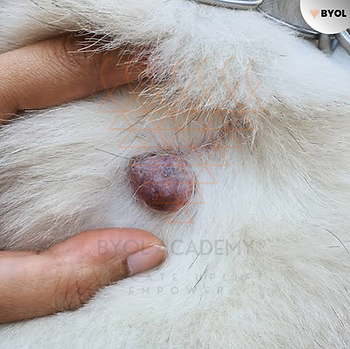
Skin tumors
- Skin tumors are the commonest canine tumors comprising about one third of all tumors, most commonly affecting middle-aged to older dogs (6 to 14years).
- About 20-30 % of skin cancers in dogs remain malignant and tend to be more aggressive having poorly defined borders, are infiltrative and may have ulceration.
- Usually skin tumors can be of epithelial origin, mesenchymal origin, squamous cell carcinomas, melanomas etc.
- Mast cell tumors are the most common canine skin tumors. These are most often found on or just beneath the skin and inside the chest or abdominal cavities. A mast cell tumor is diagnosed by taking a sample of the swelling with a needle (Fine Needle Aspiration). The standard treatment for mast cell tumors is surgical removal with radiation therapy or chemotherapy with vinblastine and prednisone.
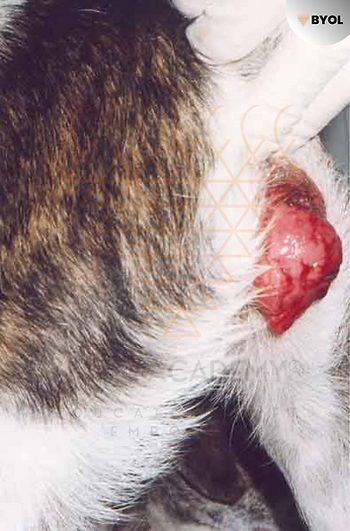
Transmissible Venereal Tumor (TVT)
- Transmissible Venereal Tumor is an infectious, sexually transmitted, reticulo-endothelial neoplasm of the dog that primarily involves the external genitalia and, rarely, the internal genitalia.
- This is a spontaneous tumor, usually seen in young, wandering and sexually active dogs.
- It spreads through coitus with females being more susceptible than males.
- The most common location in male dogs are the caudal part of the penis, and in female dogs, the posterior part of the vagina, and at junction of vestibule and vagina.
- Canine Transmissible Venereal Tumors (TVT) are cauliflower like, pedunculated, nodular, papillary or multilobulated in appearance. The surface is frequently ulcerated, inflamed and bleeds easily. They may also be transplanted to neighbouring skin and oral, nasal or conjunctival mucosae.
- Surgical excision is not recommended. Chemotherapy with Vincristine yields amazing results.
Lymphoma (Lymphosarcoma)
- This type of cancer usually manifests as enlargement of many lymph nodes in the chest or abdomen, along with the spleen, liver and intestinal tract.
- The widely prescribed therapy for lymphoma in dogs is a combination of four distinct drugs: Prednisone, Cyclophosphamide, Vincristine and Doxorubicin.
Bone Tumors
- Bone cancer like Osteosarcoma in dogs predominantly starts in one of the limbs and the warning signs of this tumor include lameness and swelling at the site of the cancer.
- The most common breeds affected by bone cancer are large to giant breed dogs.
- A fine needle aspirate of the tumor is commonly performed after X-rays of the affected bone to confirm the diagnosis. At times, a biopsy of the tumor is also necessary for diagnosis. Because osteosarcoma often metastasizes to the lungs early in the disease process, images of the chest (either via chest X-rays or CT scan) are also generally recommended before decisions are made regarding treatment options.
- Amputation of the affected limb followed by multiple courses of the chemotherapeutic agent Carboplatin is the standard of care.
- While the amputation of a limb is not always a practical possibility in dogs, there are occasions during which a limb sparing surgery is an option, based on the tumor’s location and size within the bone.
- Radiation therapy is another treatment option that avoids amputation.

Tumors of the Oral Cavity
- Tumors in the mouth can be benign or malignant. Malignant tumors of the oral cavity mostly include Melanomas, Squamous Cell Carcinomas and Fibrosarcomas.
- Signs of a tumor within the oral cavity may be bad breath, increased drooling, dropping food, difficult eating, bloody discharge in the water bowl and deformity of the facial bones.
- Diagnosis of an oral tumor usually requires a tissue biopsy.
- Most tumors of the mouth are treated by excision which may include resection of involved bone segments. Malignant oral tumors may have a place for surgical management with or without adjunctive radiation therapy.
- For melanomas, immune therapies including anti-melanoma vaccinations could be an alternative treatment.

Nasal Tumors
- There are various types of cancers that impact the nasal cavity and its associated sinuses in dogs.
- Symptoms for nose cancer are bleeding from one of the nostrils, sneezing, facial deformation and bulging of an eye.
- It is typically advised to get a CT scan. In cases when a mass lesion is noted on the CT scan, a biopsy should be done to obtain a tissue diagnosis.
- Radiation therapy is the most commonly recommended treatment option for dogs with nasal tumors. Surgery alone is not appropriate for dogs with nasal tumors because complete removal of the tumor in the nasal cavity is impossible.
Cancer in Cats
The most common cancers in cats include lymphomas, squamous cell carcinomas, mammary cancers, mast cell tumors, oral tumors, fibrosarcomas (soft tissue cancer), osteosarcomas (bone cancer), respiratory carcinomas, intestinal adenocarcinomas and pancreatic/liver adenocarcinomas.
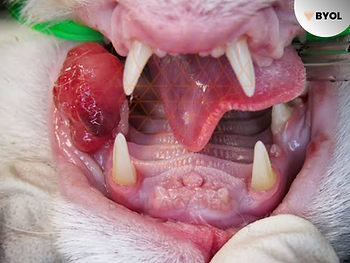
Feline Leukemia
- Feline Leukemia Virus (FeLV) is an RNA virus (a retrovirus), which only infects less than 2% of healthy domestic cats.
- The infection is more common in outdoor cats. The virus is transmitted from one cat to another through saliva, nasal secretions, feces and milk. The virus can even be transmitted to a developing kitten in-utero.
- FeLV first infects lymphocytes in the oropharynx, which then translocates to the bone marrow where virally infected cells are generated at a very high rate.
- Infected animals can show signs of anemia, weight loss, poor hair coat, decreased appetite, vomiting, diarrhea, respiratory difficulty, lymphadenopathy (swelling of the lymph nodes.
- Laboratory tests for the detection of FeLV include an antigen enzyme-linked immunosorbent assay (ELISA) and an indirect immunofluorescent antibody assay (IFA).
- Currently there is no treatment for FeLV. Antiviral therapy has been used in FeLV positive cats, but the effectiveness of the drugs is limited and they can be toxic. Medications to control and restore the immune system (immunomodulators) have also been used.
Feline Squamous Cell Carcinoma
- These tumors are most often found on and around the eyes, ears, nose, mouth, and parts of the body that have little or no hair. Sunlight over-exposure is the leading cause of SCC and is particularly dangerous to fair-haired felines.
- Scab like sores can form and progress to deep, bleeding ulcers when aggravated. In advanced stages, the cancer can spread to the lymph nodes and lungs. Tumors from advanced SCC can cause tissue necrosis and destroy bony architecture, leading to pain, discomfort, and death.
- Surgery like mandibulectomy can eliminate tumors located in the lower jaw.
- Combining the chemotherapy drug mitoXANTRONE with external beam radiation therapy produces better results than either treatment used alone.
- Cryotherapy or freeze-surgery involves insertion of a probe that freezes the tumor which kills the cancer cells.
- Photodynamic therapy (PT), where a light-sensitive material is placed within the tumor, and the tumor is then exposed to a specific wavelength of light. This activates the light-sensitive chemical, killing the tumor cells.
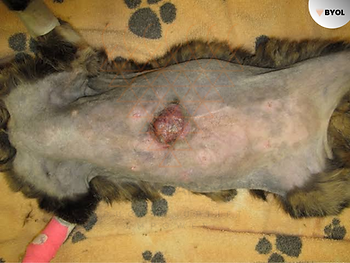
Feline Mammary Cancer
- 80% of mammary tumors are malignant. The Siamese breed has been found to have double the risk of developing this form of cancer. The average age at which the tumor develops is 10 to 11 years. Early spaying reduces risk.
- The preferred treatment option is surgical excision including the removal of one or more cell clusters (nodulectomy), partial or complete removal of the affected mammary glands, removal of lymph nodes, or mastectomy (removal of all glands on the affected side).
- Some veterinarians may also recommend radiation or chemotherapy, in addition to surgery. Common drugs used to treat FMC comprise 5-Fluoroucil, Doxorubicin, Cyclophosphamide, Methotrexate, Prednisone, and Vincristine.
Cancer in Cattle
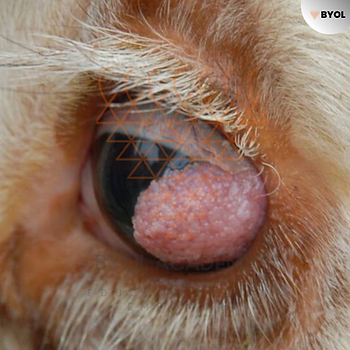
Ocular Squamous Cell Carcinoma
- It is the most common neoplasm of cattle especially in Bos taurus breeds.
- Incidence peaks at 8 years of age.
- The cause is multifactorial with heritability, sunlight, nutrition, eyelid pigmentation and possibly viral involvement making contributions.
- The lesions typically start as innocuous, smooth, white plaques on the conjunctival surfaces advancing to a papilloma, and subsequently squamous cell carcinoma. The lid lesions typically start as either an ulcerative process or as a hyperkeratotic process with a cutaneous horn.
- Diagnosis is usually made based on the characteristic clinical appearance but can be confirmed quickly by cytologic examination of impression smears.

Horn Cancer
- It is a type of squamous cell carcinoma affecting the horn base commonly in Indian bullocks (castrated bulls).
- The potential predisposing or direct cause for the horn cancer in bullocks could be castration and subsequent hormonal imbalance. Several etiological factors such as chronic trauma, ultraviolet rays, varnishes and paints used in horn decoration, hormones, genetic predisposition, and viral agents have been proposed as causative agents.
- It leads to huge financial losses due to chronic morbidity and mortality of animals.
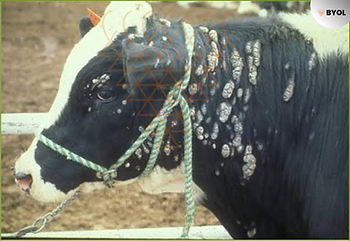
Papilloma
- Infectious Bovine Papillomatosis is a contagious bovine disease caused by Bovine Papilloma Viruses (BPV) and characterized by warts or papillomas of varying sizes involving skin, head, neck, back, abdomen, udder, perineum and mucosal epithelium of upper alimentary tract i.e oesophagus and rumen.
- The disease results in loss of production and neoplastic lesions in some cases.
- While papillomas are largely benign, some tumours can ultimately become malignant when subjected to genetic or environmental factors.
Cancer in Birds

Avian leukosis complex
- Avian Leukosis-Sarcoma group of viruses (ALSV) are major the pathogens affecting commercial poultry flocks, being present in 23% of flocks as a respiratory pathogen.
- ALSV costs poultry farmers both in productivity and in mortality, leading to economic losses.
- Rous sarcoma virus, an ALSV, contains the src gene is responsible for tumor formation in chicken quail, turkey, pigeon and duckling.
Cancer in Wild Animals
Dinosaurs
- Researchers have screened 10,000 dinosaur vertebrae specimens for tumors with fluoroscopy and computed tomography (CT) in 2003.
- Approximately 3% of the duck-billed dinosaur (Cretaceous hadrosaurs) specimens were found to have tumors, while no tumors were detected in other dinosaur species. The tumors included hemangiomas, desmoplastic fibroma, and osteoblastoma.
- Studies have also revealed that a metastatic cancer was present in only 1 of 548 Edmontosaurus vertebrae sampled. Twenty of the 669 Edmontosaurus vertebrae sampled had hemangioma.
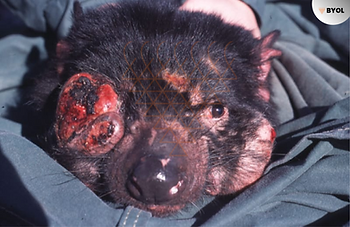
Tasmanian Devil Facial Tumor Disease
- The International Union for Conservation of Nature officially declared the Tasmanian devil an endangered species in 2008.
- Studies revealed that the animal suffers from an infectious form of cancer called Tasmanian Devil Facial Tumor Disease (DFTD). Since the disease first appeared in 1996, the population has been reduced by over 60%. It is spread from animal to animal and the cancer cells are the infectious material.
- Transmission is facilitated by biting, sharing the same food material, violent mating, and other social behaviors.
- DFTD tumors primarily develop on the face and/or oral cavity.
- Almost 100% of the infected devils perish within 6 months of the appearance of clinical signs.
- The Tasmanian government is collaborating with conservation experts to minimize the effects of the disease. On September 26, 2015, under the Wild Devil Recovery Project sponsored by the Tasmanian government, 19 Tasmanian devils were vaccinated against DFTD and released in Narawntapu National Park in northern Tasmania.
Wild Fish
- The fish, called coral trout (Plectropomus leopardus) dwells on the Great Barrier reef. Due to the reef’s location almost directly beneath the largest known ozone ‘hole’ the cancer is believed to be the result of significantly higher exposure of the fish to ultraviolet (UV) radiation.
Clams
- Studies have reported that clams get a form of leukemia that targets cells in their hemolymph.
- The disease is serious and infected clams typically die. Researchers have demonstrated that the cancer cells can detach from an infected clam and spread the disease by invading nearby animals.
References
- Broadhurst, J. 1974. Neoplasm of the reproductive system. In:R.W.Kirk(ed.), Current veterinary Therapy , (W.B.Saunders, Philadelphia), pp. 928-937.
- Das, U. and Das, A.K. 2000. Review of canine transmissible venereal sarcoma. Veterinary Research Communications, 24(8):545-556.
- Hawkins et al., Emerging disease and population decline of an island endemic, the Tasmanian devil Sarcophilus harrisii, Conserv. 131 (2006), pp. 307-324.
- Jemal, A., Seigel, R.,Ward, E., Hao,Y., Xu, J., Murray, T. and Thun, M.J. 2008. CA: A Cancer Journal for Clinicians, 58(2):71-96.
- Purohit, G. N. 2009. Canine transmissible venereal tumor : A review . The Internet Journal ofVeterinary Medicine, 6(1):116.
- Rai, R.B., Podder, N.G., Pal, R.N. and Nagaranjan, V. 1990. Incidence of lymphoid leukosis in poultry farm in Andamanas, Indian Veteterinary Medical Journal, 14:139-140.
- Rogers, K.S. 1997. Transmissible venereal tumor. Compendium on Continuing Education for the Practicing Veterinarian, 19:1036-104
- Rothschild BM, Tanke DH, Helbling M 2nd, Martin LD. Epidemiologic study of tumors in dinosaurs. Naturwissenschaften. 2003 Nov;90(11):495-500. Epub 2003 Oct 14.
- Rungsipipat, A., Sunyasootcharee, B., Ousawaphlangchai, L., Sailasuta, A., Thanawongnuwech, R. and Teankum, K. 2003. Thai Journal of Veteterinary Medicine, 33(1):59-66
- S. Lachish, H. McCallum, and M. Jones, Demography, disease and the devil: life-history changes in a disease-affected population of Tasmanian devils (Sarcophilus harrisii), Journal of Animal Ecology. 78 (2009), pp.427-436.
- Singh, S.P., Batra, M. and Singh, G.K. 2005. Important aspects of horn cancer. Cow, 32–34.

